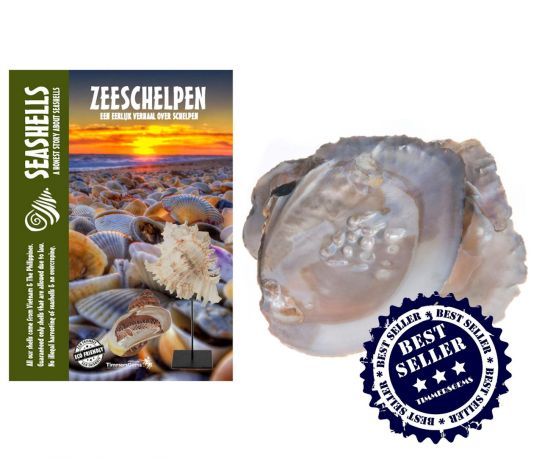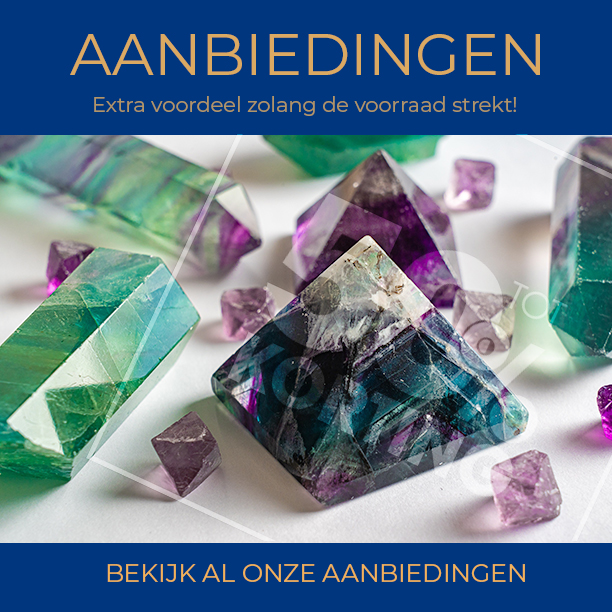Wij gebruiken cookies om uw ervaring beter te maken.
Parelschelp met cultive-parels - Japan
- Koop 25 voor € 4,50 en bespaar 10%
- Koop 50 voor € 3,99 en bespaar 20%
CULTIVATED / FRESHWATER PEARLS
Below is a small story about the production of freshwater pearls, With Timmersgems find here the best quality of pearls from Japan, China and other areas, always harvested and produced in an eco friendly way, with a passion for nature and people. Cultured freshwater pearls are pearls that are grown and made using freshwater mussels. These pearls are produced in Japan and the United States on a limited scale, but are now almost exclusively produced in China. The US Federal Trade Commission requires that freshwater cultured pearls are known as "freshwater cultured pearls' in the trade. quality cultured freshwater pearls are evaluated through an assessment of a range of values based on luster, shape and other factors Pearls harvested from the wild in the Holarctic freshwater pearl mussel were important sources of pearls to medieval jewelery, with Scotland as an important source This species now become threatened in most areas.
CURRENT AND HISTORIC INDUSTRY
Although the Japanese freshwater pearl industry has almost ceased to exist, it has a special historical place as the first country to produce all freshwater pearls, this they have done by cultivating in Lake Biwa mussels, using the Biwa pearly mussel (hyriopsisschlegeli). The industry tried a comeback with a hybrid mussel (Hyriopsis schlegeli / Hyriopsis cumingi) in Lake Kasumigaura in the last decade, but this venture failed and unfortunately the production is to cease in 2006. The pearl farm in Tennessee also has special historical
value, because it produced the only freshwater pearl outside of Asia. Founded by the late John Latendresse, it remains as a tourist attraction. Today China is the only commercial producer of freshwater pearls, production is 1500 tons (2005) to the zebra mussel (Hyriopsis cumingii)
Grafting
The grafting process begins with selecting a suitable donor mussel and cutting a strip of tissue from the shell. This strip of tissue is then cut into three millimeter squares. These compartments are provided to a technician who they have been prepared. this process is not difficult, and the technician has to follow only minimal training for the
to carry out the treatment. The technician makes small incisions on the top cover, and adds texture to the piece. the fabric is twisted slightly during insertion to create more rounded pearls in relation After the maximum number of vaccinations are completed, the mussel is reversed, and the procedure is performed again on the other valve of the shell. Chinese freshwater mussels were once grafted to 50 times per shell, or 25 times per valve. the cockscomb pearl mussel popular (Crist Aria plicata). This mussel produced a high volume of low-quality pearls that came to be known as "Crispy Rice pearls" in the 1970s and 1980s. More than a decade ago shifted
freshwater pearl industry of China producing the cockscomb pearl mussel to the Triangle shell mussel (Hyriopsis cumingii). The triangle produces fewer beads, accepted only 12-16 grafts per valve for a total production of 24 to 32 beads, pearls produced but of better quality.
PROCESSING
Harvested freshwater pearls are usually bought while they are still in the shell. After harvest of the beads, they are supplied to a first phase plant, which is responsible for cleaning and sorting of the beads according to size and shape. After this process is finished, the beads are considered ready for processing in factories. The beads are prepared (maeshori) in warm and cold chemical solution and then bleached. The pearls which exhibit strong discoloration go through the maeshori and not bleached or dyed. After the beads have been treated, they are drilled and then polished with a mixture of maize flour and wax. Finally, they are matched in temporary strands, which are then matched again in hanks. Strands are composed of 5 to 10 strands temporary and considered to be ready for wholesale.
Pearls














